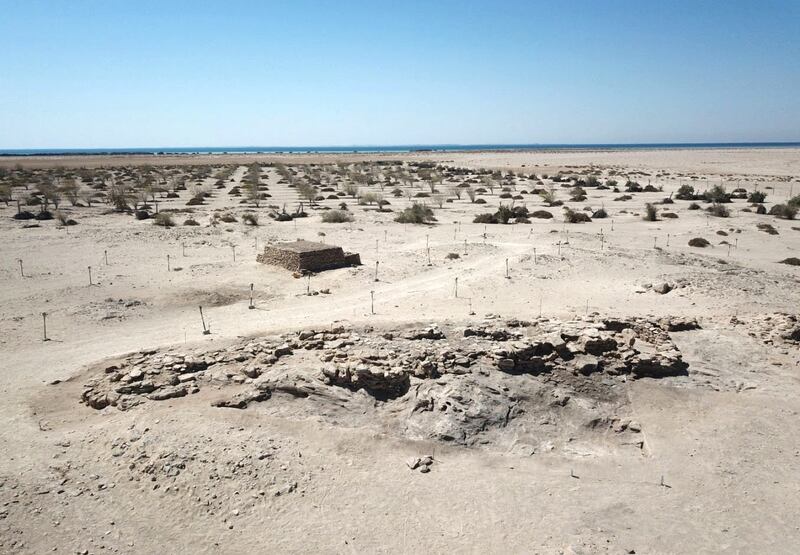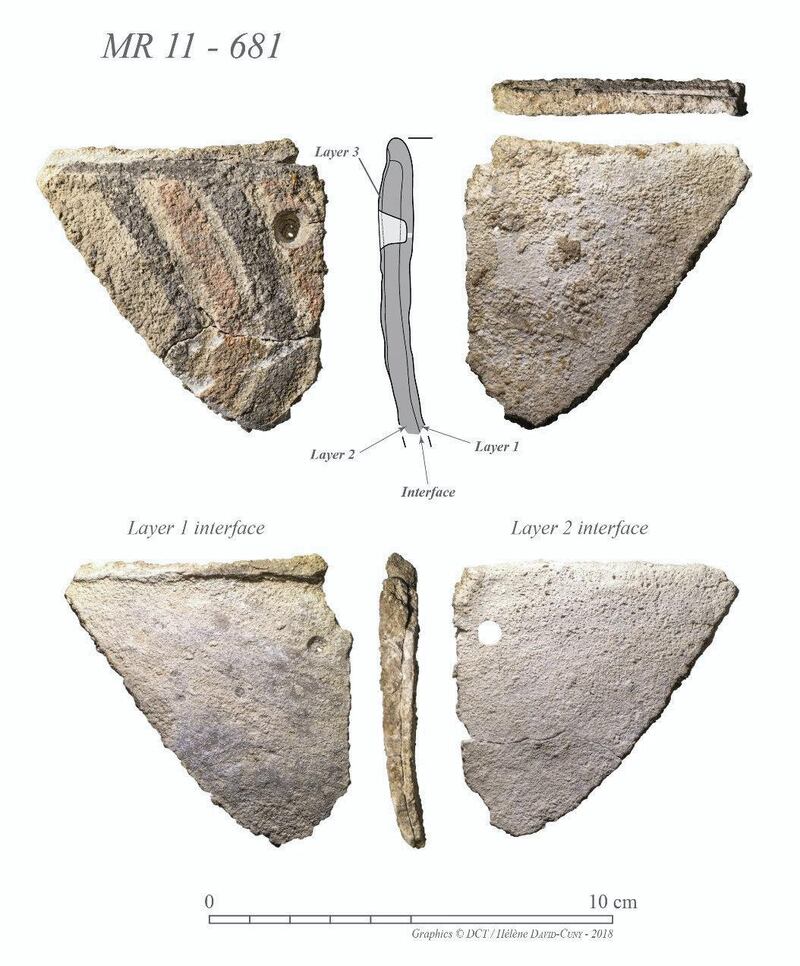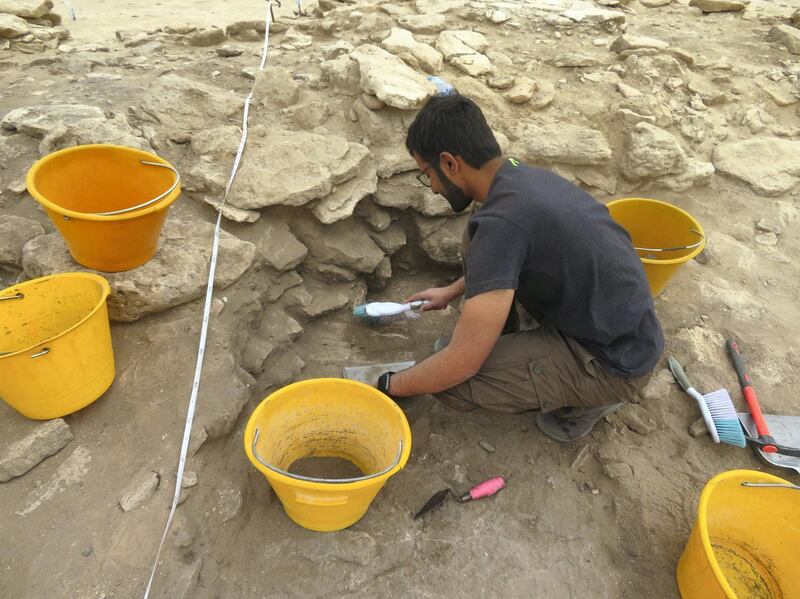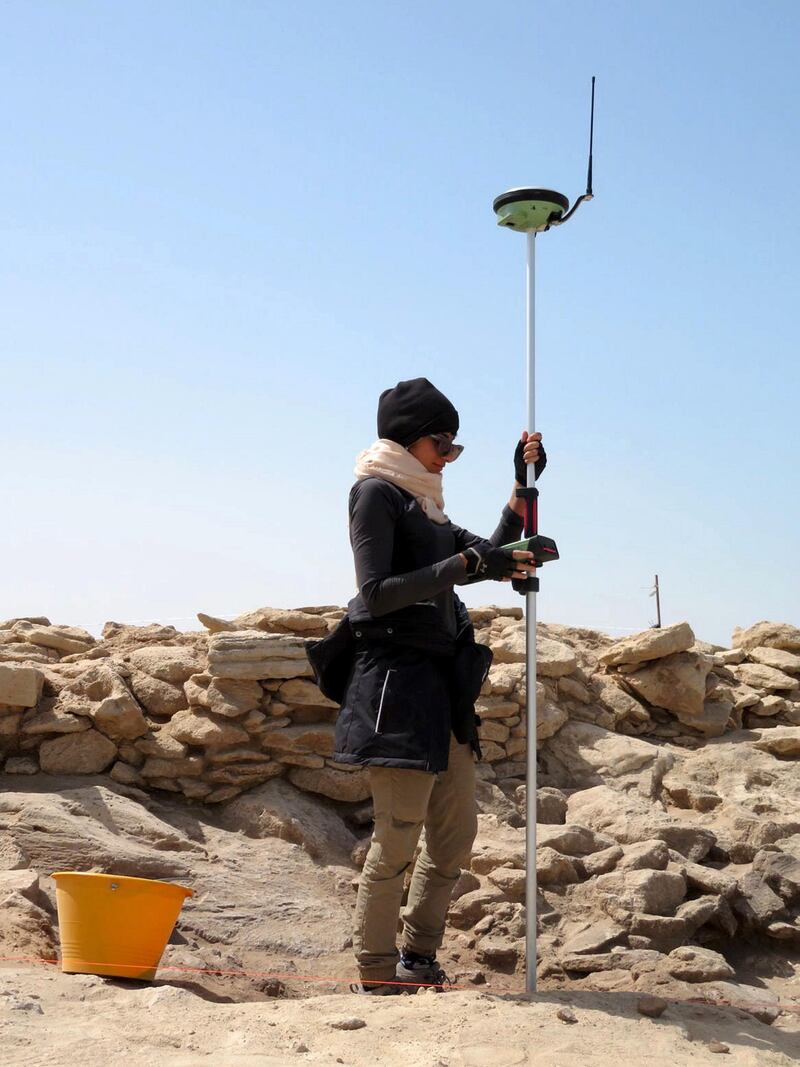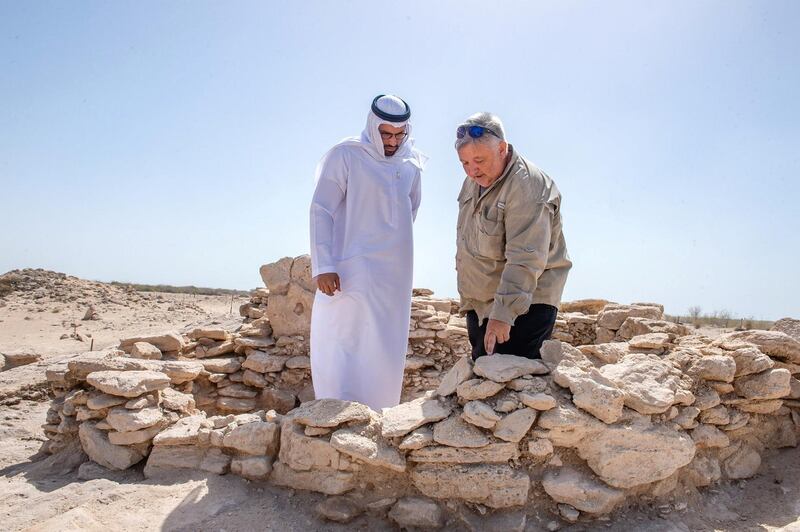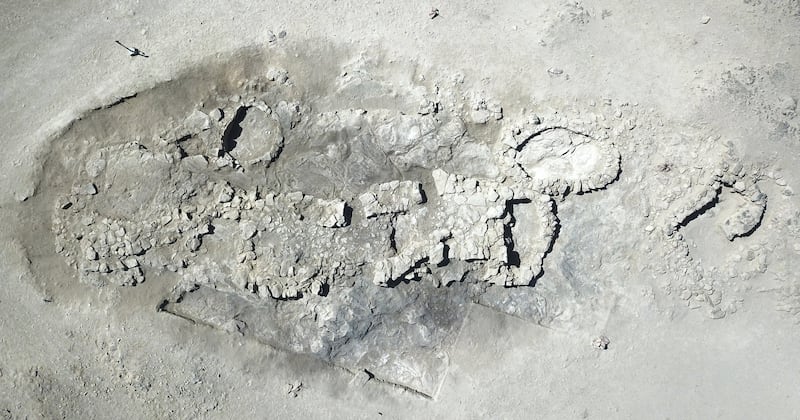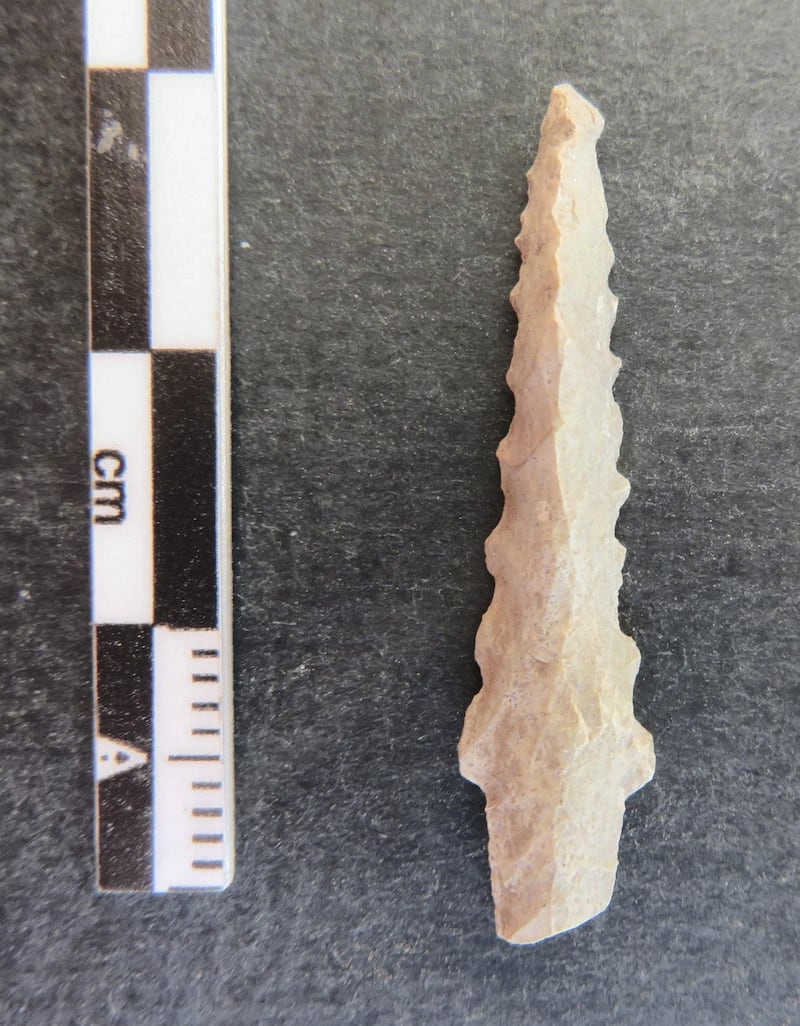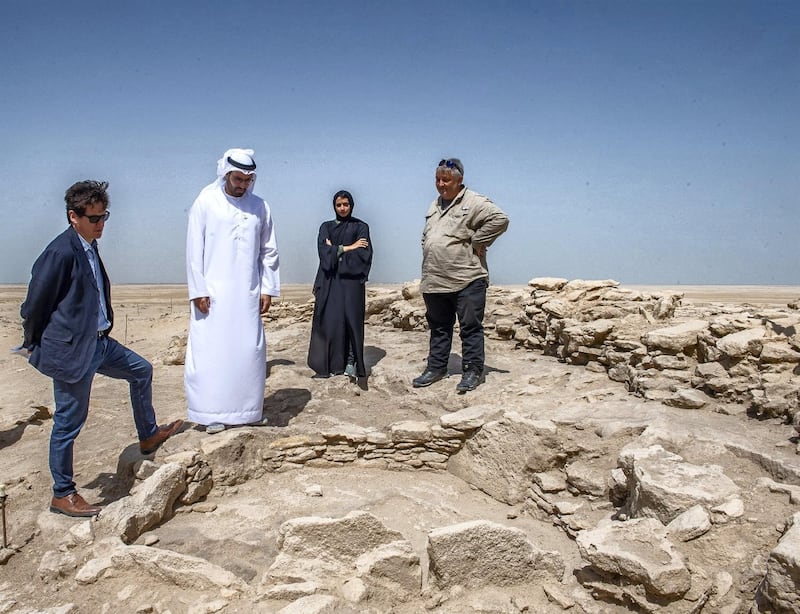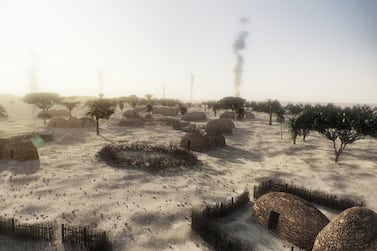Archaeologists have unearthed a trove of new artefacts that shed fresh light on Abu Dhabi's earliest-known settlement.
Large numbers of stone arrowheads and decorated plaster vessel fragments are just some of recent finds on Marawah Island.
The plaster fragments are richly painted and represent the earliest known decorative art yet discovered in the UAE.
The island — which lies just off the coast of Mirfa town, about 160 kilometres west of Abu Dhabi city — is the site of a Stone Age Village that reached its zenith about 8,000 to 6,500 years ago.
It was first identified in the 1990s but the sophistication of the settlement has become more apparent in the past few years.
Mohamed Al Mubarak, chairman of the Department of Culture and Tourism Abu Dhabi, said the finds presented stunning evidence of a rich past.
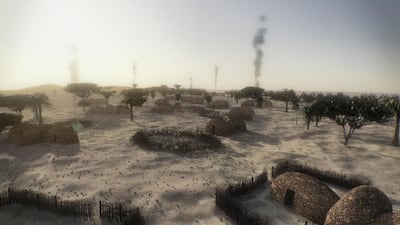
“The continuing archaeological excavations we are carrying out on Marawah Island continue to uncover fascinating and revealing discoveries,” said Mr Al Mubarak, who visited the Island on March 18.
“As we at DCT Abu Dhabi work to preserve, promote and protect the heritage sites that embody this history of our region so that they can inform future generations, Marawah Island continues to present stunning evidence of our past which reveals more and more of our storied origins.”
The most recent excavations on Marawah took place over five weeks in February and March and the finds reveal much about the architecture, art and technology of Abu Dhabi’s Neolithic inhabitants.
Carried out by specialist teams from the DCT, the dig focused on a large mound that previously revealed the existence of numerous stone buildings. The fresh investigation uncovered the full extent of this mound with a significant number of artefacts discovered.
When the site was inhabited, modern-day UAE was a different world. The region was a wetter, greener and cooler place. And the people were not primitive nomads. They built permanent stone houses, could navigate, mined, traded and even fashioned decorative art.
The dig site is situated on top of a limestone plateau west of Ghubba village in the south-western part of the island. The site consists of at least seven mounds that appear to be the remains of collapsed Neolithic stone structures.
Previous digs focused on one of the smaller mounds at the site, and uncovered a well-built, three-room stone structure and a number of significant finds. These included an imported ceramic vase — now on display at Louvre Abu Dhabi — as well as flint arrowheads and pearl oyster shell buttons, which are currently on display at Qasr Al Hosn.
Dr Mark Beech is one of the archaeologists directing the painstaking excavations on the island. In an interview with The National last year, he said the finds drew back a curtain on a vibrant world.
“People have a funny idea from Hollywood movies about the Stone Age and that the people are barbarians,” he said.
“But they are clever and intelligent. They built their houses at the highest point to catch the breeze. They adapted, like we adapted with air-conditioning.”
The stone houses unearthed on Marawah represent the earliest examples of such architecture discovered in the Arabian Gulf. It is also now believed that the people who lived there were able to expertly exploit the marine resources all around them. They caught fish using lines fashioned from gut and plant materials, while they even built fishing traps from baskets similar to the metal cage gargoors you can see in Abu Dhabi's Mina Zayed today.
Because their diet was mainly fish, the people would have been reasonably healthy and life expectancy ranged from between 30 to 50 years.
The island is now a protected area — the Marawah Marine Biosphere Reserve — and it is an important habitat for dugongs and hawksbill sea turtles.
"So much of the coast now has been altered and modernised so it’s a beautiful place," said Dr Beech. "A largely natural island with coastal mudflats and mangroves.”
